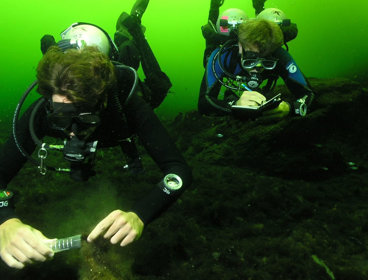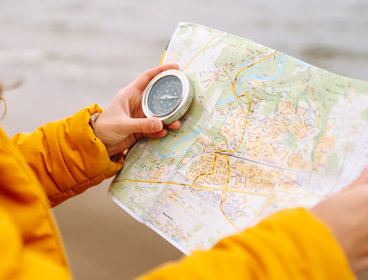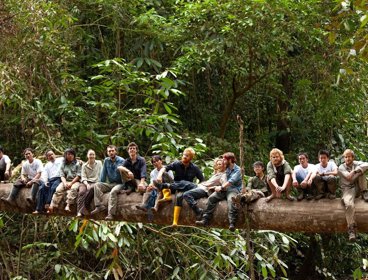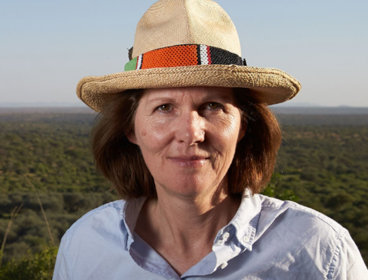Expedition funding is often seen as the most significant hurdle in the planning process, and it is one of the most frequently-asked questions we hear at the Society. But with a robust budget, a solid understanding of the fundraising landscape, and a strategic approach to choosing appropriate funding sources, your expedition ideas can absolutely become a reality.
This guide will walk you through the main types of funding for expeditions, and touch on important financial elements of a robust expedition plan that will set you up for fundraising success. The collective wisdom we share here comes from decades of supporting countless successful expeditions.
Essential foundations of expedition finance
Before you even think about approaching potential funders, laying strong financial groundwork is paramount. This is not just about finding money; it is about demonstrating credibility and ensuring your project is viable.
Crafting a compelling pitch
When you are approaching potential supporters, having a clear and persuasive proposal is essential. You will need to lay out your project aim and objectives in a manner that shows your expedition is credible, well-planned, and realistic. Donors need to feel comfortable providing support, knowing their contribution will be well spent. Remember, they may have their own stakeholders to please, so providing support to reliable expeditions that produce tangible results is key.
It is also incredibly beneficial to hone your pitch down to a short, 60-second 'elevator pitch' in case an opportunity presents itself spontaneously – you never know who you might meet or where!
Budgeting with confidence and accuracy
A well-thought-out and thorough budget is the financial foundation of your expedition. You will need to put together a robust plan before setting forth on your fundraising journey. Funders will not be interested in supporting your project if you lack a realistic financial strategy when you approach them, so ensure you have this prepared in advance – first impressions count! Your budget will also be a prerequisite for almost any grant application.
Managing risk and financial contingencies
Expeditions can be unpredictable. There are many risk factors that can contribute to a project not going according to plan: weather, health, political upheaval, equipment failure, and more. That is why building in a contingency fund as part of your budget is essential.
This is also closely related to your expedition insurance. Evacuating a team member in an emergency can be incredibly costly upfront, so this must be considered. Failure to plan for these eventualities, however unlikely they may seem, could have serious repercussions later. Building contingency funds into your budget will give you flexibility and help you avoid getting into debt.
Six common sources of expedition funding
Let's now explore the various avenues you can pursue to secure the funds for your expedition.
1. Self-funding your expedition
The first expedition you embark on will often be almost entirely self-funded. This is because without a proven track record of successful expeditions, raising funds from outside sources can be an insurmountable challenge, as you might be seen as a high-risk investment.
If you fund the expedition yourself, the financial burden is all on you – but this can actually work in your favour. You are only accountable to yourself. If the expedition does not reach all its goals or must be substantially modified, you will not have difficult questions to answer from external funders. With that, the pressure of accountability is somewhat relieved, allowing you to pursue your goals with less external responsibility weighing on you. This is a fantastic way to build your own track record, and if you decide to do further expeditions, you will have a significant addition to your CV, giving you a much better chance of attracting funders and raising your ambitions.
Carrying out an expedition where you are the sole stakeholder also gives you the invaluable opportunity to build your field skills and to discover how you operate in the field, what your strengths are, and where you can improve. All of this can set you up for greater success in the future.
2. Grant-giving organisations and charitable trusts
A significant funding for expeditions is available from grant-giving and charitable organisations. Every year, the Society supports projects both in the UK and overseas that advance geographical knowledge in a multitude of ways. In a typical year, we allocate nearly £200,000 to dozens of projects. Our grants pages have detailed information regarding the opportunities available and the eligibility criteria for each.
We also list other grant-giving organisations that might match your project. As the options are many, you should carefully consider how aligned your project is with the organisations you are looking to approach. Many organisations support specific areas of research or certain geographical locations, so you will need to ensure you have the right project for your prospective funder.
Remember: a tailored approach based on your aim and objectives is key here – your output (be it social media content, storytelling, academic research, etc.) and geographical focus will significantly affect who is interested in helping partially fund your project.
3. Personal contributions from expedition team members
It is common for expedition team members – including the team leader – to contribute to the finances of the project. While this might initially seem like a barrier to entry, it also opens the door to opportunities presented by sponsorship and fundraising at the individual level. The more team members contribute, the less the expedition will need to raise from other sources. On top of that, providing personal funds often means that team members feel more invested in the project's success.
A situation that should be addressed transparently before your fundraising launch is how funds should be distributed if an individual team member is particularly successful in their fundraising goal, or if they secure some form of sponsorship that impacts finances. Prior discussion should be had about whether this should go towards their own expenses or be added to the general pot. Clear transparency about everyone's financial responsibilities upfront are essential for team-building and avoiding misunderstandings.
4. Commercial sponsorship for expeditions
Another powerful option for expedition funding is to obtain sponsorship through commercial means. This involves an agreement with a company or organisation where the sponsor provides financial support and/or equipment and services in return for media exposure, content, or other deliverables. The sponsor will want to be seen to be supporting the project and garner as much visibility as possible.
Managing commercial partnerships can be hugely time-consuming. For a smaller independent project, this might not be viable if the team has other commitments during the expedition. For example, if an organisation requires daily video posts for social media, you will need to consider whether your team can realistically deliver on such demands, especially if your activities will be carried out in remote areas without reliable access to services like electricity and internet. There may also be deliverables required after your expedition has wrapped up, when your team might be returning to regular employment and may not have the capacity. On top of this, specialised skills such as video production, social media management, and photography are likely to be required to follow through on content agreements, so you will need to ensure those skills are in place within your team.
It is important to remember that the commercial sponsor will usually consider the giving of financial support to be an investment, rather than a donation. The return on the investment needs to match what the expedition can provide and what the commercial sponsor expects, so clear agreement is essential to ensure both parties’ expectations are aligned. It is always better to under-promise and over-deliver to build a long-term relationship.
When approaching potential commercial sponsors consider the possibility of conflicting interests. If you are pitching your expedition to multiple organisations, you need to ensure you are transparent. Potential partners may not wish to be associated with each other, or may require some kind of exclusivity.
For expeditions that can generate significant media engagement, it is possible to receive a large proportion of funding on this basis, but the commitment on your side will be equally significant.
5. Crowdfunding your expedition
Crowdfunding is a popular way of gathering small donations in large quantities to fund a project. There are many online platforms that facilitate such ventures. It is relatively simple to set up and construct a webpage for your potential donors with all the information required and a detailed picture of what your expedition will entail.
The size of your team’s network may dictate how much you are able to raise from this method. Similarly, how much emotional appeal your project has is likely to affect success. To appeal to potential donors at different levels of giving, you can set up tiered donations where the individual receives something in return (e.g., a handwritten postcard from the field, early access to content) for the amount they donate to your cause. The larger the donation, the bigger the reward.
This raised level of expectation adds a certain degree of pressure to your project, so consider your team’s capacity to follow through on promises made in this medium, and temper your donor rewards to suit.
6. In-kind expedition donations
In-kind donations differ from sponsorship in that what you receive from the donor is considered a gift. While many donors will still expect something in return, you must be clear with them about what that expectation is.
In-kind donations can come in many forms, such as flight tickets or discounts, media production gear, field equipment, or other items useful to your project. This can have a huge impact on your budgetary considerations and take a lot of pressure off your fundraising. This type of support also provides an excellent opportunity to engage with local businesses or community organisations. For example, you could approach a local outdoor equipment retailer for a discount or a donation of camping equipment. Assembling enough equipment to comfortably outfit an expedition team in the field for an extended period will quickly add to costs, which support of this kind may help alleviate.
Accountability and future success beyond the expedition
Your financial journey does not end when the expedition wraps up. Post-expedition accountability is crucial for building a positive reputation and opening doors for future projects.
Once your expedition has wrapped and you have returned home, the work probably is not over. If you have had any external sources of funding whatsoever, you will almost certainly need to provide a detailed financial report of how your project went. This should be clearly communicated to both your team members and your funders. Depending on the type of project, you may also be required to make a version of this report public. This demonstrates transparency and ensures that all the finances are accounted for.
Should you have funds left over at the end, a decision also needs to be made on what happens to these. Are they donated to a related charity? Put towards a future expedition? Returned to the donors? You may have plans already in place for this, or this may need to be discussed with your donors.
Finally, and perhaps most importantly: ensure that you thank your donors for their support. A simple, heartfelt thank-you can go a very long way, especially if you are aiming to be supported by them again in the future – or be supported by other organisations in the same community later. Maintaining communication and acknowledging contributions (publicly if they wish) is key to building lasting relationships.
Your expedition awaits!
We hope this guide has demystified the world of expedition funding and financial planning. While it may seem like a significant challenge, remember that countless expeditions have succeeded by adopting a strategic, well-planned approach. By understanding your options, building a robust budget, and communicating effectively with your team and potential funders, you are well on your way to turning your expedition dreams into a tangible reality.
Stay updated
Be the first to hear when new resources are launched by subscribing to our monthly exploration community newsletter. You'll also receive relevant news and events from the Society.
- You will be asked to create a free Society account if you haven't already done so.
- Once logged in, navigate to My preferences and select News and events about fieldwork and expeditions.





